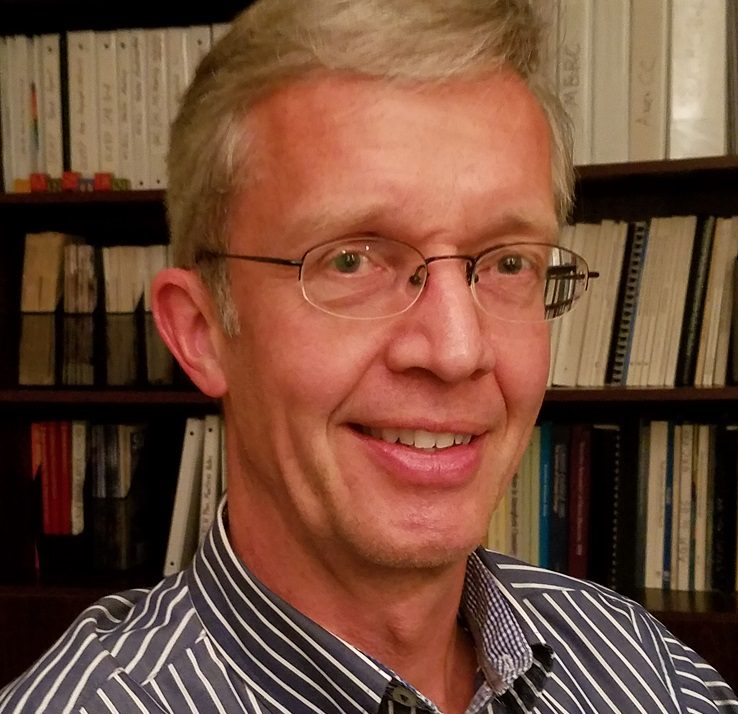
Karsten Baumann, PhD
About
Dr. Baumann has researched atmospheric processes leading to air pollution and its effects on ecosystem and human health for over 30 years. His thesis work was on ozone deposition into forests and its ecological effects. After his post-doctoral work with NOAA and NCAR in Boulder, Colorado, he directed two research centers at Georgia Tech, focusing on secondary organic aerosol (SOA) in the Southeastern US. In 2007, Dr. Baumann joined Atmospheric Research & Analysis, Inc., where he built and staffed a laboratory specifically designed for advanced chemical analyses of aerosol samples collected in the South-Eastern Aerosol Research and Characterization (SEARCH) network. Since its inception in 1998, the scientific value of SEARCH grew steadily and is manifested by over 300 scientific publications to date.
In December 2021, Dr. Baumann joined Picarro Inc., a precision instrument manufacturer specialized in the application of Cavity-RingDown Spectroscopy (CRDS) for accurate real-time measurement of trace gases in indoor and outdoor environments, workplaces, and facilities. One of his initial tasks is to improve accuracy and sensitivity of analyzers measuring highly resolved formaldehyde and ethylene oxide in real time.
From July 2017 to November 2021, Dr. Baumann served the Environmental Sciences and Engineering department of the Gillings School for Global Public Health at the University of North Carolina in Chapel Hill as an Assistant Professor, investigating multi-phase chemical reactions occurring on particles and droplets suspended in air (aerosol). In the first 6 months of this period, he joined the Multiphase Chemistry department at the Max-Planck Institute for Chemistry in Mainz, Germany, where he designed and conducted experiments allowing reproducible loading of a simulated epithelial lining fluid (ELF), containing electrolytes, surfactants and proteins, with quinones alone or in combination with other nitrated and oxygenated PAH (NOPAHs). The loaded ELF is suitable for determining the oxidative potential (OP) of the target NOPAHs employing both extra- and intra-cellular assays. The surface-mediated uptake was shown to yield higher OP compared with that from bulk mixtures. This work is ongoing and will inform kinetic modeling of the ELF interface in a comprehensive PM2.5 exposure and health risk assessment.
In July and August 2020, Dr. Baumann received funding to investigate viability of infectious aerosol in conjunction with the COVID-19 pandemic. As PI and Co-I in two highly interdisciplinary research projects, he developed capacity to measure concentration and viability of aerosol-transmitted SARS-CoV-2 virus in field and laboratory experiments. Earlier in 2019, he joined the NC Collaborative involving Duke, Eastern Carolina and NC State Universities, and Schools from UNC Chapel Hill, Charlotte, and Wilmington, to study the spatial and temporal distribution of per- and poly-fluoroalkyl substances (PFAS) contained in atmospheric aerosol. As part of this effort, he designed and conducted fence line measurements of PFAS to monitor PFAS fugitive emissions from the Chemours manufacturing plant in Fayetteville, one of the largest Teflon manufacturers in the US. At the same time, Dr. Baumann joined the Incentive to Maximize Partnerships and Catalyze Teamwork (IMPACT), where in collaboration with NCA&T Greensboro and RTI International, biomass combustion PM exposures were produced and their toxicity investigated by focusing on selected biomarkers of cytotoxicity, oxidative stress, and toxicogenomic responses. Dr. Baumann was responsible for chemically characterizing the PM emissions generated in the NCA&T combustion test chamber.
Karsten Baumann in the Gillings News
Education
- PhD (German equivalent), Energy Engineering, University of Stuttgart, Germany, 1992
- MS (German equivalent), Mechanical Engineering, University of Stuttgart, Germany, 1986
- BS (German equivalent), Mechanical Engineering, University of Stuttgart, Germany, 1981
